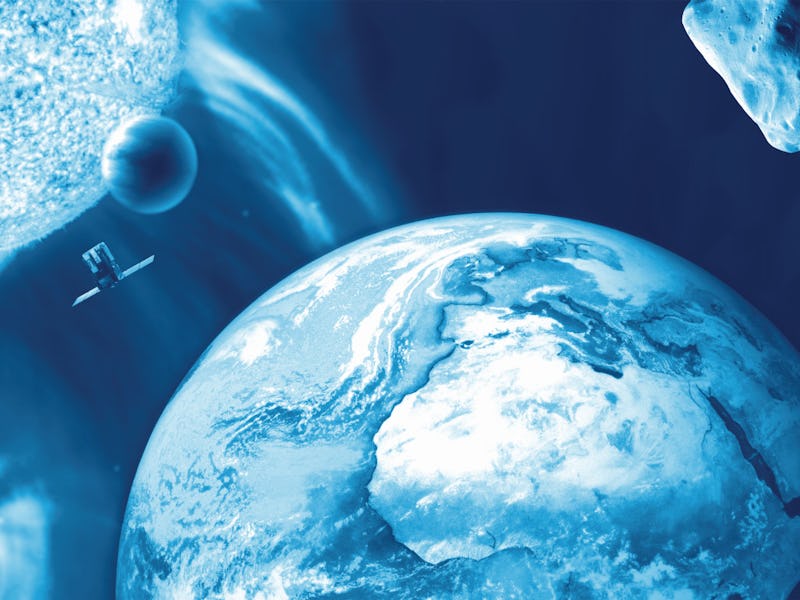Orbital Debris Day: A Bewildering Space Object and ESA’s Mitigation Plans
It's an excellent time to be studying extraplanetary garbage.

A few days ago, the European Space Agency announced that a piece of space debris it had been tracking in very high orbit would soon be heading down and making its crash-landing onto the surface of the Earth. The reentry has produced a world of excitement mixed with perplexity — it’s a great opportunity for researchers to study the trajectory and impact of objects plummeting down the Earth’s atmosphere, but it’s also causing many scientists to wonder: What is it?
And those feelings are only compounded by the fact that the asteroid is officially named WT1190F.
Indeed, WTF 1190?
The object, first spotted by the Catalina Sky Survey in 2013 — orbits the Earth every three weeks in an ‘eccentric’ (i.e. non-circular) orbit. It’s not expected to cause any damage to human-made objects on its way down into the Indian Ocean when it makes its descent on November 13.
Scientists know WT1190F not an asteroid because of observational data used to estimate the object’s density. The prevailing theory is that its the rocket body remnants of a past launch, possibly from as far back as the Apollo era. “This density is, in fact, compatible with the object being a hollow shell,” said the ESA’s Detlef Koschny in a statement.
Coincidentally (maybe), just a few days later ESA announced its plans to develop anti-space debris technologies with three European satellite makers: Airbus Defense & Space, Thales Alenia Space, and OHB. In a statement released on Tuesday, the ESA called these three companies “Europe’s Formula 1 teams for space: “designing uniquely challenging machines, relying on networks of smaller high-tech suppliers — and normally fiercely competitive.”
The new contract falls under the ESA’s CleanSat initiative which began in January, devoted to considering and developing new technologies that will stymie the generation of more space debris in Earth’s orbit. CleanSat is looking into reducing abandoned satellites and excess debris, reducing collisions caused by space junk zipping around, and limiting the threat of objects reentering Earth’s atmosphere and damaging other satellites or structures on the surface.
Currently there are about half a million pieces larger than one centimeter orbiting the Earth, all of which have the potential to cause some kind of damage to the International Space Station and other satellites up there in space.
The ESA’s goal is to ensure that future missions are relieved of any chance of experiencing an orbital explosion; that satellites that reach the end of their mission can remove themselves from Earth’s orbit within 25 years; and that objects reentering the atmosphere have a less than one in 10,000 chance of doing any harm to people or man-made objects on the surface.
These two announcements arrive at a pretty serendipitous time. It’s extremely rare for scientists to be able to predict when an object might impact Earth and rarer still for scientists to make plans to research it. But, as WT1190F plunges towards the Indian Ocean, the world’s researchers will be there to watch its every move. Moreover, the event provides scientists with the opportunity to test plans about what to do during a potentially dangerous meteor or debris crash into the Earth.
All of these observations will undoubtedly be useful for CleanSat and the companies the ESA has contracted into thinking about orbital debris remediation and mitigation. The November 13 reentry of the ‘WTF object’ could be key for understanding how space junk works and what humans can do to protect ourselves from these little bits hurling around at over 22,000 miles per hour — both up in space and down here on the ground.